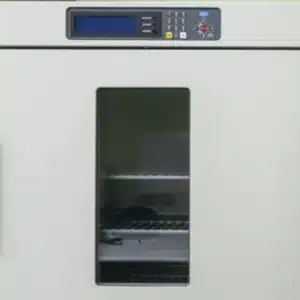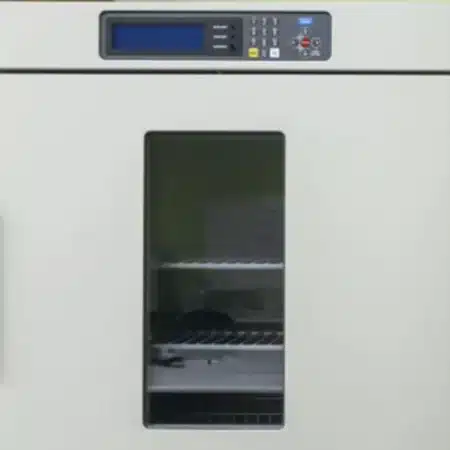The Nest Thermostat has revolutionized home heating and cooling by providing an intuitive interface to control temperature settings. However, encountering a black screen on your Nest Thermostat can be frustrating and confusing.
In this article, we will explore the common causes of a black screen and provide step-by-step troubleshooting solutions to help you resolve the issue.
About Nest Thermostat screen:
The Nest Thermostat’s screen serves as the central hub for controlling your home’s temperature. It displays vital information such as the current temperature, target temperature, and other settings.
By interacting with the screen, you can adjust temperature settings, view energy usage, and access additional features.
A black or unresponsive screen is a common problem that Nest Thermostat owners may encounter. This issue can prevent you from accessing critical information or adjusting temperature settings, making it crucial to address it promptly.
Read Also: " Solving the Mystery: Why Your Vivint Thermostat Stopped Working After a Battery Change"
Common causes:
- Power issues: The most common cause of a black screen is a power problem. Check if the thermostat receives power by inspecting the wiring and ensuring the circuit breaker is not tripped.
- Software glitches: Occasionally, software bugs or glitches can cause the screen to go black. These issues may arise due to outdated firmware or compatibility conflicts with other devices or applications.
- Hardware malfunctions: In some cases, the black screen could indicate a hardware malfunction, such as a faulty display or internal component.
- Connectivity issues: Sometimes, a black screen can be attributed to connectivity problems between the Nest Thermostat and the accompanying app or Wi-Fi network. This can occur due to weak or unstable Wi-Fi signals or app connection issues.
- Environmental factors: Environmental conditions can also contribute to a black screen on the Nest Thermostat. Extreme temperatures, excessive humidity, or exposure to direct sunlight over a prolonged period can affect the thermostat’s display.
Troubleshooting steps:
1. Check power supply:
- Verify that the thermostat is properly connected to the power source.
- Inspect the wiring to ensure it is securely connected.
- Check the circuit breaker to ensure it is not tripped.
2. Restart the thermostat:
- Remove the Nest Thermostat from its base by gently pulling it.
- Wait for a few seconds, then reattach the thermostat to the base firmly.
- Observe if the screen lights up after the restart.
3. Update software:
- Open the Nest app on your smartphone or visit the Nest website.
- Check for available firmware updates for your Nest Thermostat.
- Install any updates and restart the thermostat.
4. Perform a hard reset:
- Locate the thermostat on the wall and turn it off by switching off the corresponding circuit breaker.
- Wait for at least 30 seconds before turning the circuit breaker back on.
- Allow the thermostat to restart and check if the screen is functional.
Common solutions:
Some Nest Thermostat owners have reported success with the following solutions:
- Replace the battery if it is low or not functioning properly.
- Reseat the display by removing it from the base and reattaching it securely.
- Check for firmware updates regularly to ensure the thermostat is running the latest software version.
- Sometimes, performing a system reset can help resolve software-related issues causing the black screen.
- Over time, the display of your Nest Thermostat can accumulate dust, dirt, or smudges, which might affect its visibility. Cleaning the display can help improve screen visibility and potentially resolve the black screen issue.
If this else fails and the black screen persists, it might indicate a hardware failure. In such cases, it is advisable to seek professional assistance from a certified technician who specializes in Nest Thermostat repairs. They will be able to diagnose the issue accurately and suggest appropriate solutions.
Advanced troubleshooting steps:
- Check for software updates: In addition to updating the thermostat’s software, it’s worth checking for updates on the connected devices and applications, such as the Nest app or any smart home integration platforms. Keeping all software up to date can help ensure compatibility and address potential conflicts that may be causing the black screen issue.
- Monitor for error codes or indicators: The Nest Thermostat may display error codes or indicators when encountering specific issues. Research common error codes associated with a black screen and check if any such codes are displayed on the thermostat. Understanding these codes can provide valuable clues about the root cause of the problem and guide you toward a solution.
Prevention and maintenance tips:
- Regularly clean the thermostat: Dust and debris can accumulate on the thermostat’s screen, affecting visibility and potentially causing issues. Develop a habit of gently cleaning the screen with a soft, lint-free cloth to prevent build-up and maintain optimal performance.
- Protect the thermostat from extreme conditions: Exposing the Nest Thermostat to extreme temperatures, direct sunlight, or excessive humidity can impact its functionality. Ensure the thermostat is installed in a suitable location away from such conditions or use protective measures like shades or covers to shield it.
Conclusion
Encountering a black screen on your Nest Thermostat can be frustrating, but by following the troubleshooting steps outlined in this article, you can resolve the issue and regain control of your home’s temperature settings.
Check the power supply, restart the thermostat, update the software, and perform a hard reset if needed. If the problem persists, don’t hesitate to contact Nest customer support or consult a professional technician. With proper troubleshooting and assistance, you can get your Nest Thermostat back up and running smoothly.
Q: Why is the screen of my Nest thermostat black?
A: A black screen on your Nest thermostat usually indicates a loss of power or a software issue. Start by checking if the thermostat is securely connected to its base and if the base has power. If there is power, try restarting the thermostat by pressing and holding the ring
Q: What should I do if restarting the Nest thermostat doesn't fix the black screen issue?
A: If restarting the Nest thermostat doesn't resolve the black screen issue, try removing it from the base and cleaning the connectors on both the thermostat and the base. Dust or debris may interfere with the connection. After cleaning, reattach the thermostat to the base and see if the screen turns on.
Q: Can a firmware update fix the black screen issue on my Nest thermostat?
A: Yes, in some cases, a firmware update can fix software-related issues that cause the black screen problem. Ensure your Nest thermostat is connected to Wi-Fi, and if an update is available, it will be automatically downloaded and installed. You can also check for updates manually in the Nest app or on the Nest website.
Q: Is a black screen always a sign of a defective Nest thermostat?
A: Not necessarily. While a black screen can indicate a hardware issue, it is also commonly caused by power loss, software glitches, or connectivity problems. Troubleshooting steps, such as checking the power source and restarting the thermostat, should be performed before assuming a hardware defect.
Q: Can I factory reset my Nest thermostat to fix the black screen issue?
A: Yes, performing a factory reset can sometimes resolve persistent issues, including a black screen. To factory reset your Nest thermostat, go to the thermostat's settings menu, select "Reset," and follow the on-screen instructions. Keep in mind that a factory reset erases all settings and preferences, so you'll need to reconfigure your thermostat afterward.






